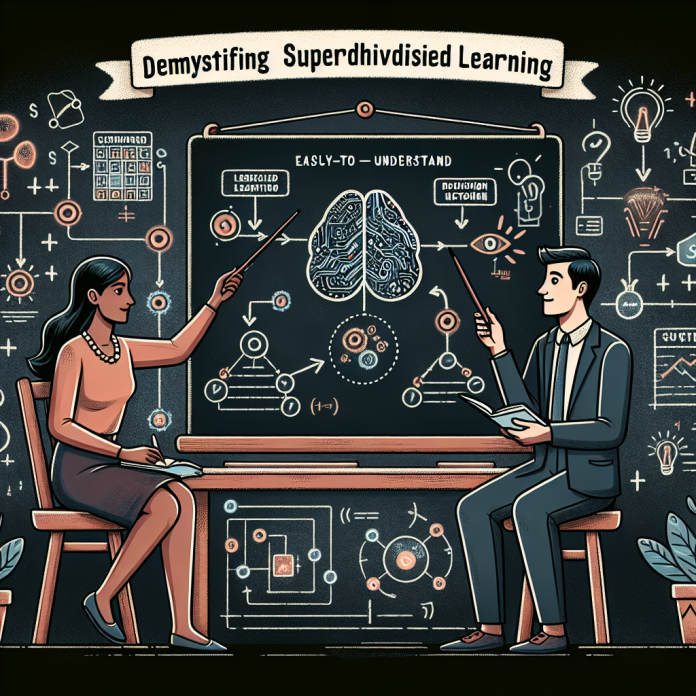Supervised Learning Simplified: An Easy Guide to Understanding Machine Learning
Imagine you’re trying to teach a computer how to distinguish between pictures of cats and dogs. How do you make sure it can accurately identify which animal is in each image? This is where supervised learning comes in. In the world of machine learning, supervised learning is a powerful technique that allows us to train algorithms to make predictions based on labeled data. But what exactly is supervised learning, and how does it work? Let’s dive into the world of machine learning and explore this fascinating concept.
### What is Supervised Learning?
Supervised learning is a type of machine learning where the algorithm is trained on a labeled dataset. In simple terms, the algorithm learns to map input data to the correct output by studying examples provided in the training dataset. The goal of supervised learning is for the algorithm to make accurate predictions on new, unseen data.
### How Does Supervised Learning Work?
To understand how supervised learning works, let’s go back to our example of distinguishing between cats and dogs in images. In this scenario, the labeled dataset would consist of images of cats and dogs where each image is tagged with the correct label (either “cat” or “dog”). The algorithm is then trained on this dataset to learn the patterns and features that differentiate cats from dogs.
During the training phase, the algorithm goes through multiple iterations, adjusting its parameters to minimize the difference between its predicted output and the actual output. This process is known as optimization, where the algorithm tries to find the best set of parameters that will allow it to make accurate predictions.
Once the algorithm has been trained, it is tested on a separate set of data called the validation set. This allows us to evaluate the performance of the algorithm and see how well it generalizes to new, unseen data. If the algorithm performs well on the validation set, it can then be deployed to make predictions on real-world data.
### Real-Life Applications of Supervised Learning
Supervised learning is used in a wide range of applications across different industries. In healthcare, for example, supervised learning algorithms can be used to diagnose diseases based on patient data and medical images. In finance, these algorithms can be used to predict stock prices and make investment decisions. In marketing, supervised learning is used to analyze customer behavior and personalize recommendations.
One example of supervised learning in action is spam filtering. When you mark an email as spam in your inbox, you are providing labeled data to the algorithm that helps it learn to identify spam emails in the future. As the algorithm is exposed to more examples, it gets better at distinguishing between spam and non-spam emails, ultimately improving the accuracy of the spam filter.
### Challenges and Limitations of Supervised Learning
While supervised learning is a powerful tool for making predictions, it does have its limitations. One of the main challenges is the need for labeled data, which can be time-consuming and expensive to obtain. Additionally, supervised learning algorithms may struggle to generalize to new, unseen data if the training dataset is not representative of the real-world environment.
Another limitation of supervised learning is overfitting, where the algorithm performs well on the training set but fails to generalize to new data. This can happen when the algorithm learns noise in the data rather than the underlying patterns, leading to poor performance on unseen data.
### Conclusion
In conclusion, supervised learning is an essential concept in the field of machine learning that allows us to train algorithms to make predictions based on labeled data. By providing the algorithm with examples of input-output pairs, we can teach it to learn the patterns and features that differentiate different classes of data.
While supervised learning has its challenges and limitations, it is a powerful tool that is used in a wide range of applications across various industries. By understanding the principles of supervised learning and how it works, we can harness the potential of machine learning to solve complex problems and make better decisions in our daily lives. So the next time you use a spam filter or get personalized recommendations online, remember that it’s all thanks to the magic of supervised learning.

